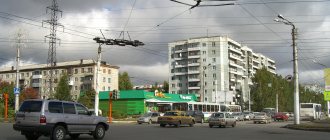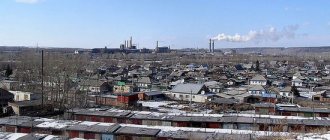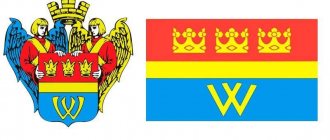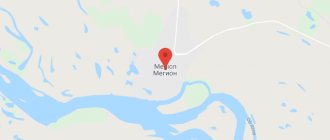Leninsk-Kuznetsky district
Leninsk-Kuznetsky district
— municipal formation in the Kemerovo region.
The administrative center is the city of Leninsk-Kuznetsky (not part of the district).
Geography
The region is located in the central and northwestern part of the Kemerovo region, in the center of the Kuznetsk depression and belongs to the steppe regions of the region. The terrain is quite complex - hilly. The climate is sharply continental, with long and cold winters and hot but short summers. The direction of the prevailing winds is southwest. Leninsk-Kuznetsky district
occupies an area of 2.4 thousand km². The area has 134.9 thousand hectares. 26.1 thousand hectares are occupied by arable lands, forests and shrubs, and 4.8 thousand hectares by swamps. The area of agricultural land occupies 83% (including arable land - 58.2%), forests - 8.5%, water - 0.8%, other lands - 7.7%. Among the mineral resources, there is coal; in the floodplain part of the Inya River there are deposits of construction sands (substandard). There are deposits of quartz sand, limestone, gravel, building stone, gold, and manganese. The main river of the region is Inya with its tributaries (Kasma River, Ur River, South Unga River). The soils are chernozem, dark gray, slightly podzolic.
City infrastructure
Roads in Leninsk have at least some kind of marketable appearance only in the center and in residential areas. In some places (especially in villages within the city) the road network is in poor condition. At the same time, in some places in the center the asphalt is laid simply perfectly - one of the sad paradoxes of the city.
On the positive side: there are no traffic jams here. Which is not surprising, given the size of Leninsk.
Housing and communal services tariffs, as elsewhere in Russia, are growing rapidly. For example, in 2011, some categories (sewage, hot water supply) grew by 20%. Situation in autumn 2012:
- heating - 21.02 rubles per square meter of area (taking into account the standard of payment), or 32.34 rubles per square meter (in the amount of 100%);
- hot water – 76.77 rub. per cubic meter (“Vodokanal”) or 49 rubles per cubic meter (FGLPU “NKTsOZSH”);
- cold water – 18.49 rub. per cubic meter;
- water disposal - 12.86 rubles. per cubic meter;
- electricity – 1.62 rubles. per kWh or 2.31 rub. per kWh (if a stationary stove is installed in the house/apartment).
The provision of transport is acceptable - not only buses, but also trolleybuses run in Leninsk. You can get to Kemerovo or Tomsk either by intercity bus or by train.
There are relatively few problems with kindergartens in the city. Despite the fact that nine kindergartens have closed since the beginning of the 2000s, more than half of the children of the corresponding age attend the remaining thirty preschool education institutions. The problem of lack of places is mitigated by the fact that a significant part of the city’s female population are housewives.
There is no shortage of secondary schools, but parents with slightly above-standard education have limited choice: only two gymnasiums and one lyceum.
Future athletes are trained at the children's and youth sports school, and gymnasts/gymnasts at the Mametyev Sports and Youth Sports School. The city also has a music school, a palace of creativity, a house of technical creativity and a center for further education. The people working there really do everything that can be done in such conditions, but this does not save the situation as a whole - it is very difficult to provide a well-rounded education for a child in the city.
Story
In the XVII-XVIII centuries. the lands of the current region were the southern outpost of the network of Tomsk Cossack fortresses. Since 1802, with the formation of the Tomsk province, its Kuznetsk district was formed here, which existed until 1924.
In 1925, the Leninsky district
and
Krasninsky district
with its center in the village of Krasnoye.
Since 1930, the Leninsky district
has been part of the West Siberian Territory, since 1937 - part of the Novosibirsk region.
By decree of the Presidium of the Supreme Soviet of the RSFSR dated February 22, 1939, the Leninsk-Kuznetsky district
with its center in the city of Leninsk-Kuznetsky, which included the territories of the former
Leninsky
and
Krasninsky districts
. In 1943, the Leninsk-Kuznetsky district became part of the newly formed Kemerovo region.
In accordance with the Law of the Kemerovo Region dated December 17, 2004 No. 104-OZ[2], the Leninsk-Kuznetsky district is given the status of a municipal district, 8 municipalities (rural settlements) are formed.
Administrative structure
The district includes 8 rural settlements, uniting 68 settlements:
| № | Urban and rural settlements | Administrative center | Number of settlements | Population | Area, km2 |
| 1 | Gornyatskoe rural settlement | Vosushchiy village | 7 | 2325[1] | 84,176 |
| 2 | Demyanovskoe rural settlement | Demyanovka village | 14 | 3381[1] | 463,549 |
| 3 | Dracheninsky rural settlement | village of Drachenino | 10 | 1802[1] | 178,766 |
| 4 | Krasninskoe rural settlement | Krasnoe village | 5 | 3895[1] | 322,264 |
| 5 | Podgornovskoe rural settlement | Podgornoye village | 10 | 2238[1] | 284,26 |
| 6 | Chkalovskoe rural settlement | Chkalovsky village | 7 | 2456[1] | 294,69 |
| 7 | Chusovitinskoe rural settlement | village Chusovitino | 5 | 3089[1] | 228,781 |
| 8 | Shabanovskoe rural settlement | Shabanovo village | 10 | 3016[1] | 499,63 |
Notes
- ↑ 12345678910
www.gks.ru/free_doc/doc_2016/bul_dr/mun_obr2016.rar Population of the Russian Federation by municipalities as of January 1, 2016 - [docs.cntd.ru/document/990309084 Law of the Kemerovo Region of December 17, 2004 No. 104-OZ On the status and boundaries of municipalities]
- [www.perepis2002.ru/ct/doc/1_TOM_01_04.xls All-Russian Population Census 2002. Volume. 1, table 4. Population of Russia, federal districts, constituent entities of the Russian Federation, districts, urban settlements, rural settlements - regional centers and rural settlements with a population of 3 thousand or more]. [www.webcitation.org/65AdCU0q3 Archived from the original on February 3, 2012].
- [www.gks.ru/bgd/regl/B09_109/IssWWW.exe/Stg/d01/tabl-21-09.xls Number of permanent population of the Russian Federation by cities, urban-type settlements and districts as of January 1, 2009]. Retrieved January 2, 2014. [www.webcitation.org/6MJmu0z1u Archived from the original on January 2, 2014].
- [kemerovostat.gks.ru/wps/wcm/connect/rosstat_ts/kemerovostat/resources/ff43230040e572408ffeef367ccd0f13/1.6.pdf All-Russian Population Census 2010. Kemerovo region. 1.6. Population of urban districts, municipal districts, urban and rural settlements, urban settlements, rural settlements]. Retrieved July 26, 2014. [www.webcitation.org/6RMInOgkU Archived from the original on July 26, 2014].
- [kemerovostat.gks.ru/wps/wcm/connect/rosstat_ts/kemerovostat/resources/4e7e85004f2f177b9e0ede3a99b5ae2d/Number+of population+MO.htm Population of municipalities of the Kemerovo region at the beginning of the year]. Retrieved April 1, 2014. [www.webcitation.org/6OVfWh6AV Archived from the original on April 1, 2014].
- [www.gks.ru/free_doc/doc_2012/bul_dr/mun_obr2012.rar Population of the Russian Federation by municipalities. Table 35. Estimated resident population as of January 1, 2012]. Retrieved May 31, 2014. [www.webcitation.org/6PyOWbdMc Archived from the original on May 31, 2014].
- [www.gks.ru/free_doc/doc_2013/bul_dr/mun_obr2013.rar Population of the Russian Federation by municipalities as of January 1, 2013. - M.: Federal State Statistics Service Rosstat, 2013. - 528 p. (Table 33. Population of urban districts, municipal districts, urban and rural settlements, urban settlements, rural settlements)]. Retrieved November 16, 2013. [www.webcitation.org/6LAdCWSxH Archived from the original on November 16, 2013].
- [www.gks.ru/free_doc/doc_2014/bul_dr/mun_obr2014.rar Table 33. Population of the Russian Federation by municipalities as of January 1, 2014]. Retrieved August 2, 2014. [www.webcitation.org/6RWqP50QK Archived from the original on August 2, 2014].
- [www.gks.ru/free_doc/doc_2015/bul_dr/mun_obr2015.rar Population of the Russian Federation by municipalities as of January 1, 2015]. Retrieved August 6, 2015. [www.webcitation.org/6aaNzOlFO Archived from the original on August 6, 2015].
Enterprises and work in Leninsk-Kuznetsky
The city's economy is, of course, based on coal mining. Mine named after Kirov, mine named after. November 7, mine named after. Yaroslavsky, “Komsomolets”, “Kolchuginskoe”. The life of miners here is no more fun than in other cities (in Kuzbass, there are really “stupid” salaries only at Raspadskaya in Mezhdurechensk). A monthly salary of 20 thousand rubles or more is the prerogative of miners working in the face; other mine workers receive less.
Kuzbasselement produces batteries - at this plant you can earn up to 15 thousand a month. If, of course, they can be obtained at all. In 2009, the owners of the enterprise disappeared, leaving unprofitable production and wage debts - now the situation has normalized a little, but it is clearly too early to add Kuzbasselement to the white list.
Women can get jobs as workers at a worsted cloth factory (salaries are symbolic - up to 10 thousand) or go to the service staff (sales consultants and waitresses in some places earn more) - to Travelers or the Chamber. However, good vacancies in the service sector appear extremely rarely.
Shopping center Fabrika
Insufficient infrastructure development makes the city attractive for entrepreneurs. A person who opens, for example, an interestingly designed and inexpensive cafe in a residential area in the northeast can count on a good profit. Another thing is that fighting constant checks, the greed of officials, and crime is a matter for strong-willed people. But for people associated with local authorities, only good luck awaits them in business - amazingly lucky ones (I note that this paragraph consists mainly of guesswork - in no way do I want to offend the officials of this glorious city).
The city's doors are open for representatives of well-known networks. But if you do not own Apricot or, say, Euroset, you need to think very carefully about the prospect of starting a business in Leninsk. Especially considering the information in the next section.
Links
Demyanovskoe rural settlement 189 km | Demyanovka | Egozovo | Zolotarevsky | Krasnaya Polyana | Krasnoyarsk | Lapshinovka | Litvinovsky | Nizhny Novgorod | Novogeorgievka | Novopokrovka | Ozyorovka | Khmelevo | Chesnokovo Dracheninsky rural settlement 169 km | Drachenino | Continuity | Petrovsky | Rolling | Sapogovo | Construction | Trekino | Khudyashovo | School Krasninskoe rural settlement Arinichevo | Kokui | Red | Kharkov Log | Khrestinovsky Podgornovskoe rural settlement Ivanovka | Krasnoyarsk | Novo-Ursky | Pavlovka | Podgornoe | Porechye | Spring | Russian-Ursky | Sverdlovsky | Ustyuzhanino Chkalovskoe rural settlement Elevation | Krasnaya Gorka | Peaceful | Novogorodets | Novopokasma | Rakitny | Chkalovsky Chusovitinskoe rural settlement Berezovka | New | Panfilovo | Semyonovo | Chusovitino Shabanovskoe rural settlement Friendly | Kamyshino | Quarry (Belaya Glinka) | Musohranovo | Orlovsky | Pokrovka | Sokolovka | Toropovo | Shabanovo | Southern
An excerpt characterizing the Leninsk-Kuznetsky district
“Although it was face to face,” Anatole continued, “but I can’t...” “Well, do you need satisfaction?” - Pierre said mockingly. “At least you can take back your words.” A? If you want me to fulfill your wishes. A? “I’ll take it back,” said Pierre, and I ask you to excuse me. Pierre glanced involuntarily at the torn button. - And money, if you need it for the trip. – Anatole smiled. This expression of a timid and mean smile, familiar to him from his wife, exploded Pierre. - Oh, vile, heartless breed! – he said and left the room. The next day Anatole left for St. Petersburg. Pierre went to Marya Dmitrievna to report the fulfillment of her wish - the expulsion of Kuragin from Moscow. The whole house was in fear and excitement. Natasha was very ill, and, as Marya Dmitrievna told him in secret, on the same night it was announced to her that Anatole was married, she poisoned herself with arsenic, which she quietly obtained. Having swallowed a little of it, she was so frightened that she woke up Sonya and told her what she had done. In time, the necessary measures were taken against the poison, and now she was out of danger; but still she was so weak that it was impossible to think of taking her to the village and they sent for the countess. Pierre saw the confused count and the tear-stained Sonya, but could not see Natasha. Pierre had lunch at the club that day and heard talk from all sides about an attempt to kidnap Rostova and stubbornly refuted this talk, assuring everyone that nothing more happened than that his brother-in-law proposed to Rostova and was refused. It seemed to Pierre that it was his responsibility to hide the whole matter and restore Rostova’s reputation. He fearfully awaited the return of Prince Andrei and every day he came to see the old prince about him. Prince Nikolai Andreich knew through M lle Bourienne all the rumors circulating around the city, and read that note to Princess Marya, which Natasha refused to her fiancé. He seemed more cheerful than usual and was looking forward to his son with great impatience. A few days after Anatole's departure, Pierre received a note from Prince Andrei, notifying him of his arrival and asking Pierre to come see him. Prince Andrei, having arrived in Moscow, at the very first minute of his arrival received from his father a note from Natasha to Princess Marya, in which she refused the groom (she stole this note from Princess Marya and gave it to Prince m lle Bourienne) and heard from his father, with additions, stories about the abduction Natasha. Prince Andrei arrived the evening before. Pierre came to him the next morning. Pierre expected to find Prince Andrei in almost the same position in which Natasha was, and therefore he was surprised when, entering the living room, he heard from the office the loud voice of Prince Andrei, animatedly saying something about some kind of St. Petersburg intrigue. The old prince and another voice occasionally interrupted him. Princess Marya came out to meet Pierre. She sighed, pointing her eyes at the door where Prince Andrei was, apparently wanting to express her sympathy for his grief; but Pierre saw from Princess Marya’s face that she was glad both about what happened and about how her brother accepted the news of his bride’s betrayal. “He said he expected it,” she said. “I know that his pride will not allow him to express his feelings, but still better, much better, he endured it than I expected.” Apparently, this was how it had to be... - But is it really all over? - said Pierre. Princess Marya looked at him in surprise. She didn’t even understand how she could ask about this. Pierre entered the office. Prince Andrei, very changed, obviously healthier, but with a new, transverse wrinkle between his eyebrows, in civilian dress, stood opposite his father and Prince Meshchersky and argued heatedly, making energetic gestures. It was about Speransky, news of whose sudden exile and alleged betrayal had just reached Moscow. “Now he (Speransky) is being judged and accused by all those who admired him a month ago,” said Prince Andrei, “and those who were not able to understand his goals.” It is very easy to judge a person in disgrace and blame him for all the mistakes of another; and I will say that if anything good has been done during the current reign, then everything good has been done by him - by him alone. “He stopped when he saw Pierre. His face trembled and immediately took on an angry expression. “And posterity will give him justice,” he finished, and immediately turned to Pierre. - How are you? “You’re getting fatter,” he said animatedly, but the newly appeared wrinkle was carved even deeper on his forehead. “Yes, I’m healthy,” he answered Pierre’s question and grinned. It was clear to Pierre that his smile said: “I’m healthy, but no one needs my health.” Having said a few words with Pierre about the terrible road from the borders of Poland, about how he met people in Switzerland who knew Pierre, and about Mr. Desalles, whom he brought from abroad as his son’s teacher, Prince Andrei again heatedly intervened in the conversation about Speransky , which continued between two old men. “If there had been treason and there had been evidence of his secret relations with Napoleon, then they would have been publicly announced,” he said with vehemence and haste. – I personally do not like and did not like Speransky, but I love justice. - Pierre now recognized in his friend the all-too-familiar need to worry and argue about a matter alien to himself, only in order to drown out too heavy spiritual thoughts. When Prince Meshchersky left, Prince Andrei took Pierre's arm and invited him into the room that was reserved for him. The room had a broken bed and open suitcases and chests. Prince Andrei went up to one of them and took out a box. From the box he took out a bundle in paper. He did everything silently and very quickly. He stood up and cleared his throat. His face was frowning and his lips were pursed. “Forgive me if I’m bothering you...” Pierre realized that Prince Andrei wanted to talk about Natasha, and his broad face expressed regret and sympathy. This expression on Pierre's face angered Prince Andrei; he continued decisively, loudly and unpleasantly: “I received a refusal from Countess Rostova, and I heard rumors about your brother-in-law seeking her hand, or the like.” Is it true? “It’s both true and not true,” Pierre began; but Prince Andrei interrupted him. “Here are her letters and a portrait,” he said. He took the bundle from the table and handed it to Pierre. - Give this to the Countess... if you see her. “She is very sick,” said Pierre. - So she’s still here? - said Prince Andrei. - And Prince Kuragin? – he asked quickly. - He left a long time ago. She was dying... “I’m very sorry about her illness,” said Prince Andrei. – He grinned coldly, evilly, unpleasantly, like his father. - But Mr. Kuragin, therefore, did not deign to give Countess Rostov his hand? - said Prince Andrei. He snorted several times. “He couldn’t get married because he was married,” said Pierre. Prince Andrei laughed unpleasantly, again resembling his father. - Where is he now, your brother-in-law, may I know? - he said.
Crime
We can talk about crime in Leninsk-Kuznetsky for a long time. An indicative point: the area of Victory Square (this is the city center, the registry office is located nearby) in police reports is equated in terms of crime level to the depressive area of the Zakamyshan hospital. In practice, this means that you can be robbed anywhere: even if you are walking along the main street in the evening, it is reckless to feel safe.
Situations are still possible in the city that residents of many regions have already forgotten about. The seizure of Ursa Bank in 2009 caused a wide resonance. A man armed with a firearm took five people hostage. He demanded the release of his friend from prison, a round sum of money and a plane. It is noteworthy that the governor himself went to negotiate with the invader, but everything ended according to a harsh scenario: riot police killed the criminal during the seizure of the building. The hostages were not injured.
However, some cases are of interest not because of the scale of their villainous acts, but because of their almost cartoonish comedy. In the summer of 2012, a healer was detained in Leninsk for “treating” clients by taking gold and jewelry from them (allegedly in order to sanctify them). The jewelry ended up in a pawn shop. And the would-be healer (a drug addict, by the way) received three “suspended” years in prison.
It is somehow not customary to remember the era of the 90s in Leninsk. Probably because the criminal component of city life has changed little. In Leninsk, random interlocutors, as of old, talk about how “half of the city is held” by K***. And they remember that some time ago another authority was widely known (with a surname also beginning with K), but after the “showdown” that ended sadly for him, he left for Novokuznetsk. Yes, they don’t shoot in the streets like in the 90s. But in fact, little has changed. First of all, the thinking of the townspeople has not changed.







